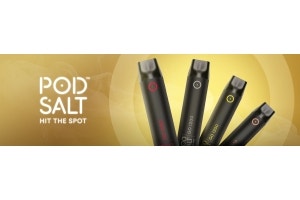Is Vaping Harmless or Less Harmful? The Truth About Vaping

In the murky realm of vaping, distinguishing fact from fiction can be quite challenging. Whether you're a dedicated vaper, a health-conscious individual, or a smoker contemplating the switch, understanding the truth about the potential harm—or lack thereof—in those vaporous clouds is crucial. Here, we're not just providing empty talk; we're committed to illuminating the science, the studies, and the essential nuances surrounding the health implications of vaping.
A Moment in History
Before diving into the data, reflect on how swiftly vaping has surged into mainstream culture. What started as a niche activity has expanded into a multi-billion-dollar industry, complete with sleek devices that serve as fashion accessories and E-liquids available in a vast array of flavours. Yet, this rapid rise of the vaping scene is accompanied by a thick cloud of controversy.
Understanding the Harm of Vaping
A central debate in the vaping community centres on the harm profile of e-cigarettes. Are they truly a safer alternative for smokers, or are we simply trading one form of danger for another? Experts distinguish clearly between "harmless" and "less harmful," a differentiation crucial to public health discussions.
E-liquids contain a mixture of propylene glycol, vegetable glycerin, nicotine, and various flavourings, each with its own health implications. However, when compared to the thousands of chemicals and carcinogens found in cigarette smoke, it becomes evident how much less harmful vaping is.
Also Read:Can you Quit Smoking By Vaping? What You Need to Know
The Science Behind the Vapour
What does the scientific community say about vaping? Recent studies making headlines suggest a correlation between vaping and potential harms, such as DNA damage in the mouth akin to that caused by smoking, raising concerns about cancer. However, it's essential to interpret these findings with a critical perspective. The researchers themselves emphasized that their results do not directly link vaping to cancer development. As Cancer Research UK noted, the study identified some cellular changes but did not determine their implications.
The long-term effects of vaping remain largely unexplored. The relative youth of these technologies means the scientific community is in a constant state of catch-up, with ongoing research gradually illuminating a complex health landscape. Despite this ongoing inquiry, one thing remains clear: while vaping is not without risks, it is less harmful than smoking. Consequently, vaping is not recommended for non-smokers, as they are already engaging in the least harmful behaviour by not smoking at all.
Vaping as a Harm Reduction Strategy
For those struggling to quit smoking, vaping has emerged as an effective harm reduction tool. Public health advocates have made strides in promoting vapes as a bridge to a smoke-free life, highlighting risk reduction rather than complete eradication. However, the effectiveness of vaping as a cessation device remains a contentious issue, with the scientific community and health organizations divided in their opinions.
Harm reduction, a key principle in public health, focuses on minimizing the negative impacts of substance use rather than insisting on abstinence. In the case of vaping, this means potentially reducing the severe health risks associated with smoking, provided it acts as a transitional step rather than a permanent substitute.
Decoding the Vape Verdict
In the conversation about vaping, it's crucial to understand the gradient between "harmless" and "less harmful." The term harmless suggests complete safety with no risk or negative effects, implying that an activity or product is entirely risk-free. Conversely, less harmful acknowledges some inherent risk, though significantly reduced compared to traditional smoking.
This distinction is vital as it positions vaping as a preferable alternative for current smokers due to its reduced harm—rather than a risk-free option for everyone. This nuanced understanding supports informed public health decisions.
For vapers, ensuring the safety of your experience involves purchasing vape juice and devices from reputable retailers. Transparency in product ingredients and staying informed within the community are essential steps to safeguard your health.
For the broader public, keeping up with the latest research is important. Those outside the vaping community should engage not as adversaries but as allies in progress. By focusing on scientific evidence rather than sensational headlines, we can collectively work towards a smoke-free future for all.
The Cloud’s Silver Lining
Amidst the haze of uncertainties, one clear fact stands out like a beacon: vaping is a less harmful alternative to smoking, offering hope to those striving to quit traditional cigarettes. Despite the surrounding noise and confusion, isn't there a silver lining for those seeking to escape the clutches of conventional tobacco? The discourse on vaping is dense, but it's a conversation worth engaging in, one that prioritizes factual understanding and our collective well-being.
Regarding the long-term health effects of vaping, the verdict is still pending as ongoing studies continue to explore its implications. However, vaping responsibly may indeed be the lesser of two evils when compared to smoking. It is our responsibility to sift through the information, evaluate the risks, and make informed choices that lead us toward a healthier future.





